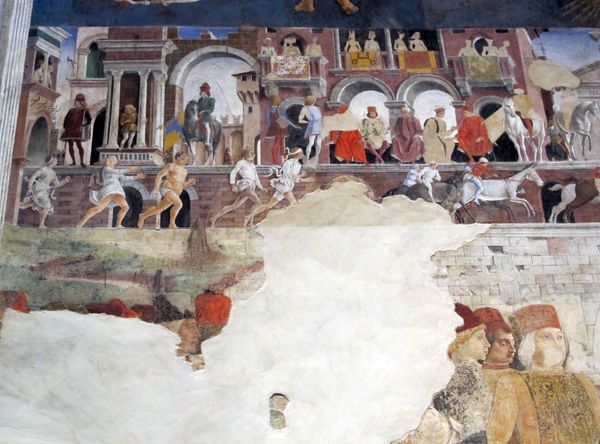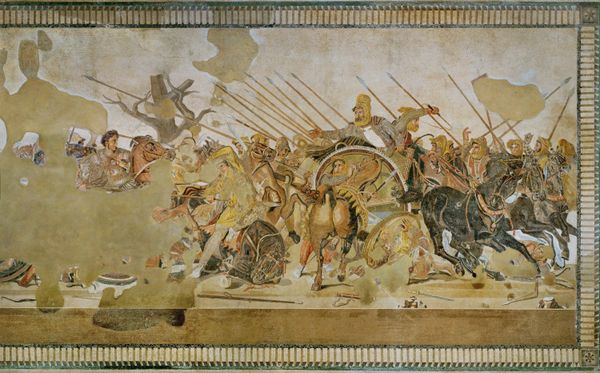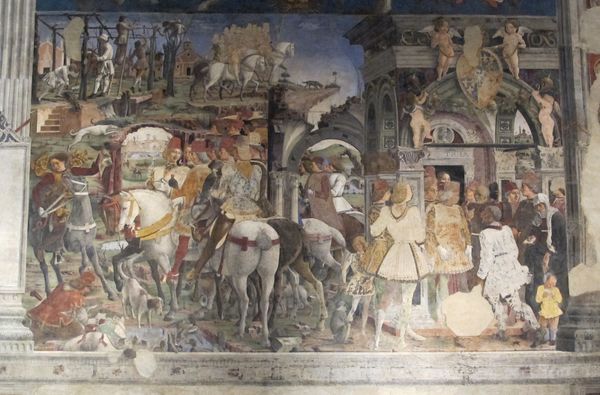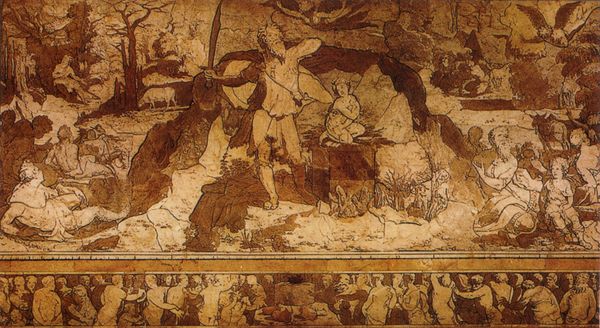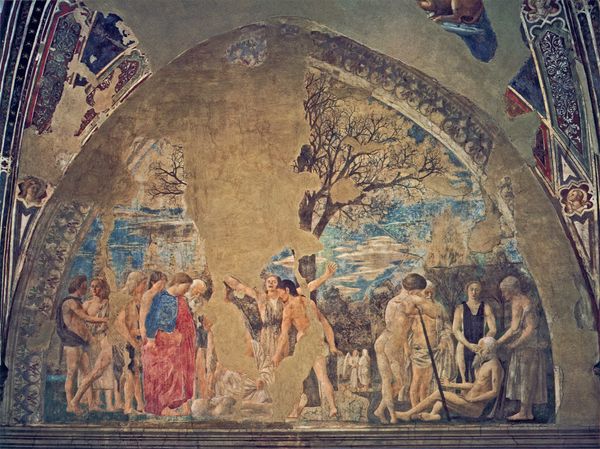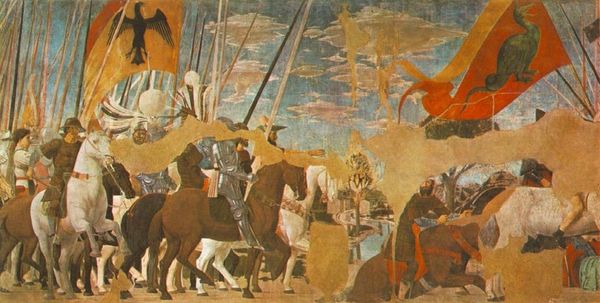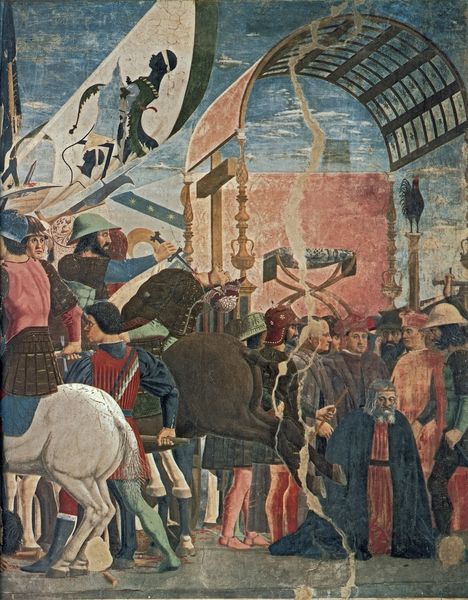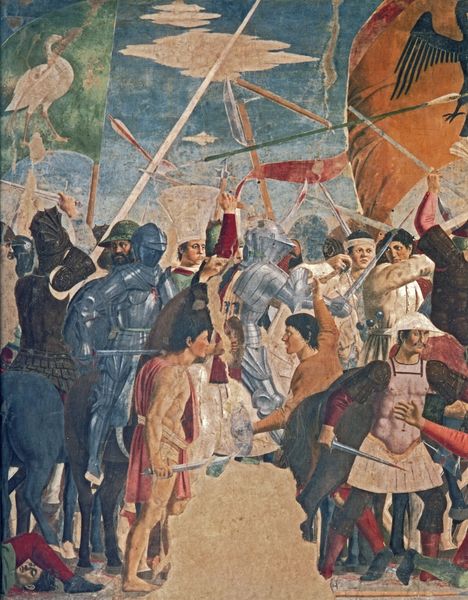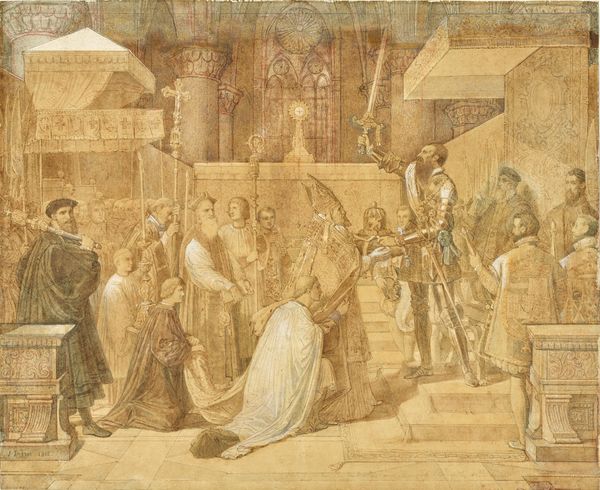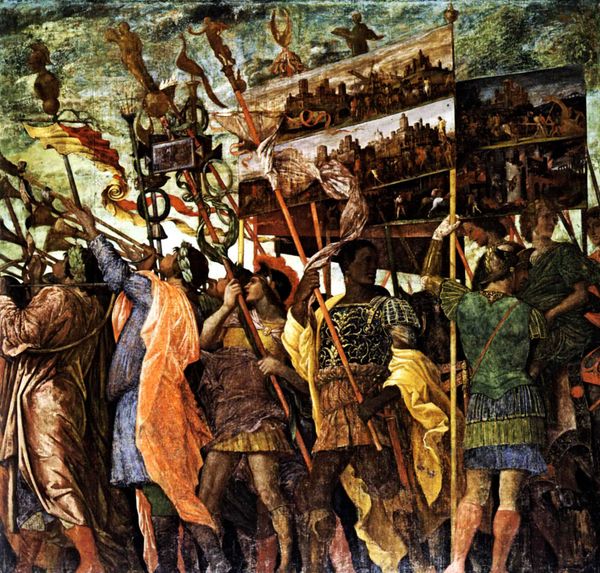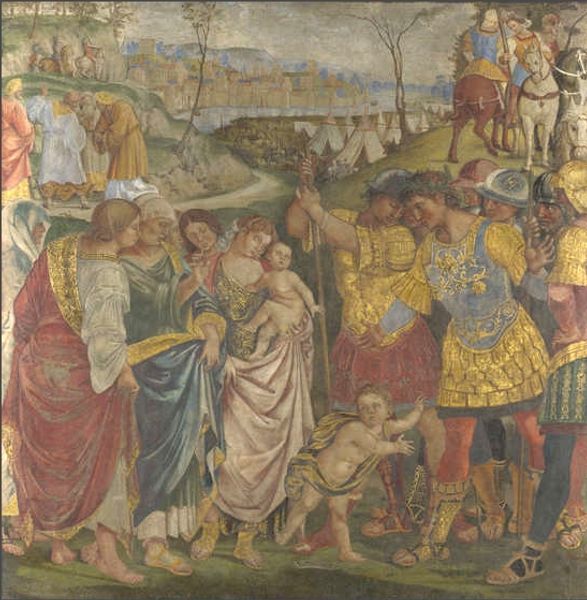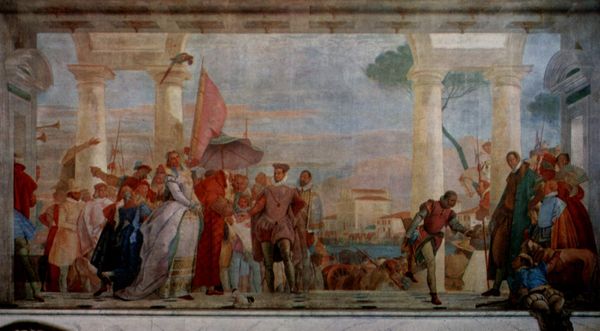
painting, fresco
#
painting
#
fresco
#
oil painting
#
soldier
#
christianity
#
history-painting
#
italian-renaissance
#
realism
Copyright: Public domain
Curator: The atmosphere is so charged—almost suffocating. There’s a starkness to the composition, the palette, even the evident damage on the fresco seems to amplify the grim scene unfolding before us. Editor: What we’re observing is a fresco by Andrea Mantegna, completed around 1457. It's entitled "Martyrdom of St. James", one of the scenes narrating his life. Fresco is a difficult medium and the existing damages clearly affect our viewing, of course, but do not ultimately obscure our understanding of it as a historical painting deeply entrenched in themes of Christianity. Curator: Agreed. Given that Mantegna opted for fresco, what can we glean about its intended environment and the socio-economic context in which it was produced? Fresco is, after all, a relatively inexpensive material, commonly applied in religious buildings due to its longevity when appropriately preserved. Editor: Absolutely. Frescoes directly connect to the architecture—they become part of the very walls they adorn. This work, considering its historical setting and religious theme, served as visual propaganda and didactic material. The act of martyrdom itself underscores themes of faith, sacrifice, and power, specifically, papal power. Curator: The staging of the martyrdom is quite theatrical, wouldn’t you say? The executioner, James... everyone seems carefully placed. There's a tangible sense of dramatic narrative playing out; almost like an historical account is brought to life before our very eyes. The background provides some sort of vista on an urban center, it helps in anchoring this narrative. Editor: Mantegna certainly manipulates perspective, drawing the viewer into the violence, though slightly removed. I wonder about how this portrayal interacts with prevailing beliefs of justice, faith, and defiance against temporal authority within the cultural mindset. Curator: Indeed. The act of martyrdom can then be considered in defiance against temporal authority as the ultimate resistance within a very strict socio-political system. The making of Mantegna's composition, by its fresco medium, its life size character staging and dramatic focus on the key protagonist also reveals the intersection between technique, artistic agency, and social influence. Editor: So much to unpack in a single scene. It invites reflection on not just a biblical moment, but on enduring issues of faith, power, and how these themes continue to manifest in diverse ways, which should in turn open further inquiries from the modern subject viewing it today. Curator: It really does force one to consider, the making of "art" intersects with all aspects of socio-historical influence and challenges its autonomy, calling on labor practices and religious consumption from an even broader point of consideration.
Comments
No comments
Be the first to comment and join the conversation on the ultimate creative platform.
